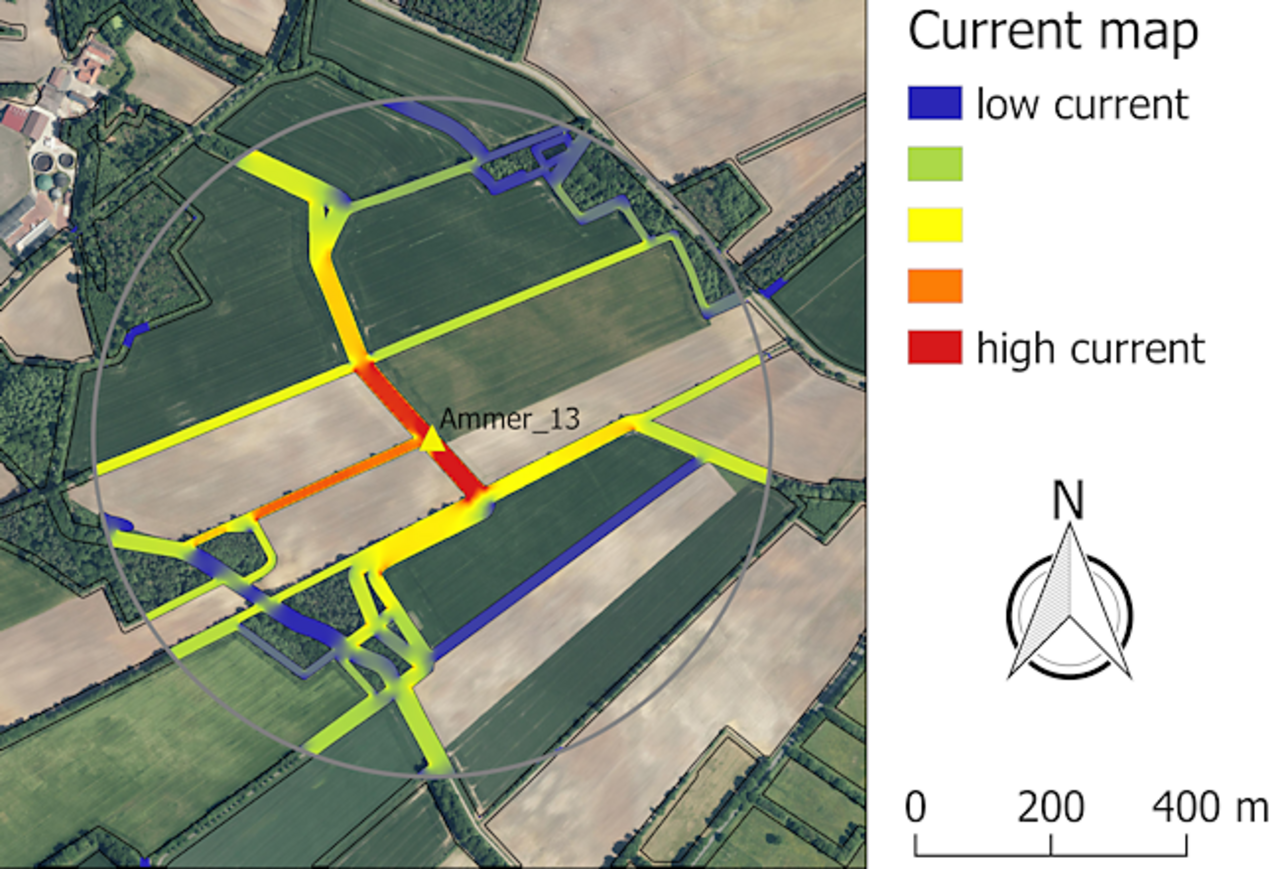Project
Modelling of landscape resistances for different species groups

Modelling landscape resistances for different functional groups of arthropods and plants
Landscapes can impede dispersal of species to various degrees. Resistances of landscapes also depends on species’ dispersal abilities. We model landscape resistance for different functional groups of species based on circuit theory (Circuitscape).
Background and Objective
- What is the local resistance (raster-cell level) of the agricultural landscape matrix and of semi-natural landscape elements for different functional groups?
- What are the gap-crossing distances of different functional groups?
- How are local resistances related to land-cover type and to species' traits?
- In which way does the isolation effect depend on species' traits?
Approach
We use the software Circuitscape for calculations of landscape resistances and assess local resistance values of land-use and land-cover types based on empirical data (e.g. similarity indices of sample plots).
Thünen-Contact

Duration
Permanent task 5.2018
More Information
Project status:
ongoing

![[Translate to English:] [Translate to English:]](/media/_processed_/e/3/csm_Demetra2_c8a192c0f8.jpg)
![[Translate to English:] [Translate to English:]](/media/_processed_/e/2/csm_Demetra1_Panorama_8557ee3b13.jpg)





